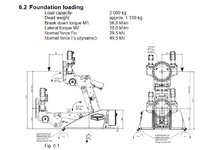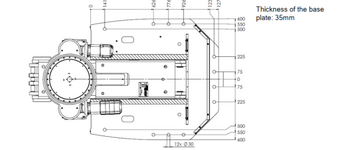I have a project where overturning is a concern and am confused on how to get the "actual" tension in the anchor bolts that are being proposed. I understand the work flow through ACI on how to solve for the required strengths on concrete breakout and side face blowout etc. A lot of resources are based on a column baseplate with an even pattern of anchors and a centralized moment but my moment is from overturning where it is located at the left end of the baseplate. How do I go about solving for the actual tension on the bolts? The more specific issue is how would I solve for the minimum amount of anchors required to hold the machine down safely.
I've used Hilti Profis to get a general idea but I want to be able to verify via hand calcs.
I've used Hilti Profis to get a general idea but I want to be able to verify via hand calcs.


